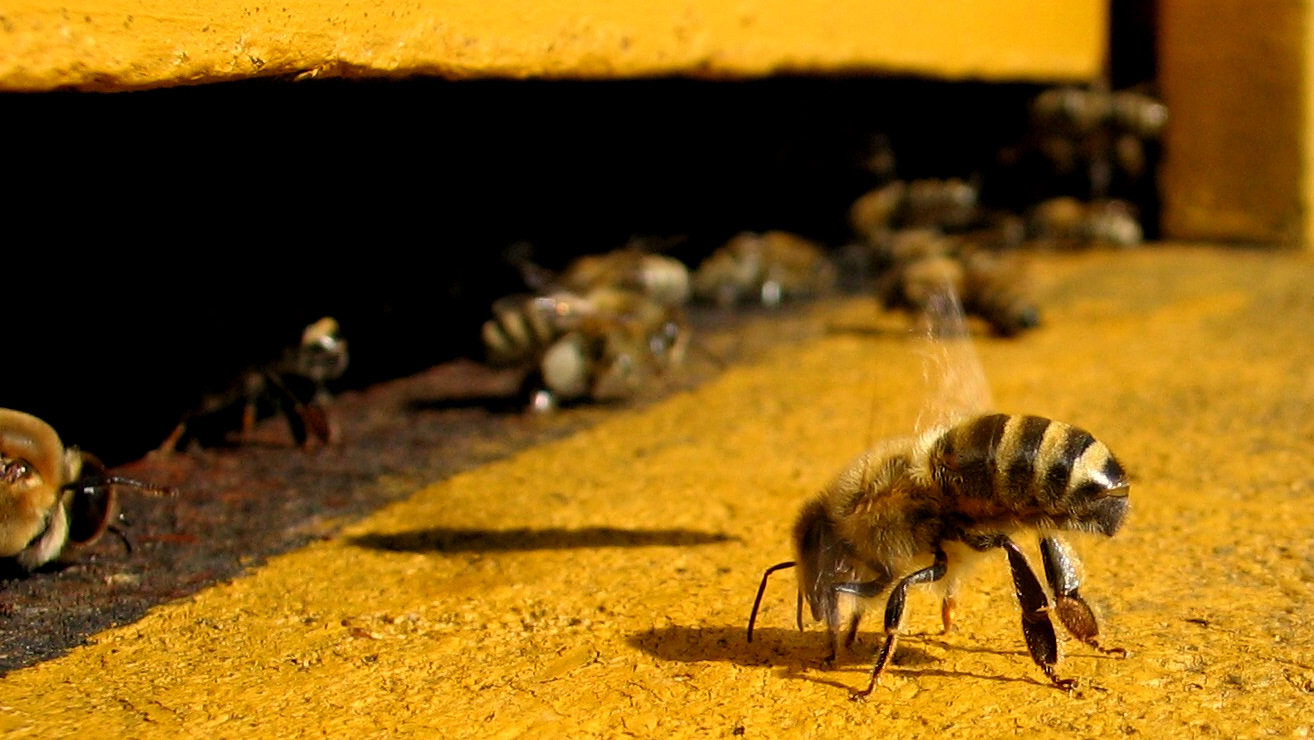 A honey bee at a hive entrance fanning, colony collapse disorder is causing alarm over the security of the world’s food supply.
A honey bee at a hive entrance fanning, colony collapse disorder is causing alarm over the security of the world’s food supply.
MINNEAPOLIS — For years, biologists and agricultural scientists have raised the alarm about colony collapse disorder, the global phenomenon of honey bee die-offs that leaves entire hives abandoned. Although many are pointing fingers at a common insecticide, the causes of the crisis remain largely unknown. And the problem continues to worsen.
Called the Bee Informed Partnership survey, this University of Maryland report looked at professional beekeepers’ hives used in American agriculture. Although fewer bees died over the last winter — a traditionally risky time for the health of colonies — summertime bee deaths increased from almost 20 percent in 2013 to over 27 percent in 2014.
“Commercial beekeepers … are now losing more colonies in the summertime compared to the winter. Years ago, this was unheard of,” said Dennis vanEngelsdorp, the entomologist in charge of the study, to CBS News.
Another entomologist involved with the study, Jeff Pettis, from the U.S. Department of Agriculture, called the results “very troubling.”
“If beekeepers are going to meet the growing demand for pollination services, researchers need to find better answers to the host of stresses that lead to both winter and summer colony losses,” Pettis told CBS News.
Research suggests varroa mites, a common lethal infestation, may be responsible for backyard bee deaths. But despite the growing popularity of the hobby, only 5 percent of American bees are kept by backyard beekeepers, and commercial keepers are adequately trained to prevent mites.
Beyond mites, a number of factors are probably involved in bee deaths. Jessica Mendoza, staff writer at the Christian Science Monitor, cited “poor diets due to climate change, drought, and urban development,” as other causes for bee die-off.
Though the research remains controversial, many scientists now blame neonicotinoids, chemicals similar to nicotine found in common insecticides used on seeds. Mendoza reports:
“Three — clothianidin, imidacloprid and thiamethoxam — have been banned in the European Union because of concerns about the chemicals’ harmful effect on honey bees. In April, the US Environmental Protection Agency announced that it would not approve most applications for new uses of neonicotinoids pending results from pollinator risk studies.”
While some scientists have criticized the researchers for using unrealistically high doses of neonicotinoids, two studies suggest bees might be growing addicted to the substances.
“Taken together, the two studies point to a compound that, with repeated exposure, can be detrimental to bees who can’t stop themselves from going back for more,” wrote Pete Spotts for Christian Science Monitor in April. One study “found that relatively large doses could reduce the health in colonies and undercut a colony’s ability to rejuvenate itself after winter ends. But in smaller doses, such as those applied to seeds in advance of planting, the team found negligible effects on colonies.”
“We are not worried bees are going to go extinct,” researcher vanEngelsdorp told CNBC. “What we are worried about is that the commercial beekeeper won’t be able to stay in business.”
Gizmodo’s Kiona Smith-Strickland warned that consumers will suffer from bee die-offs, regardless of the cause.
“Most commercial beehives don’t make their money on honey; they earn their living by renting out their bee colonies to pollinate farmers’ crops,” wrote Smith-Strickland. “As bee populations decline, there will be fewer colonies to meet the demand for pollination, beekeepers will have to haul their hives further to do the job, and the increased cost will, most likely, get passed along to you.”

